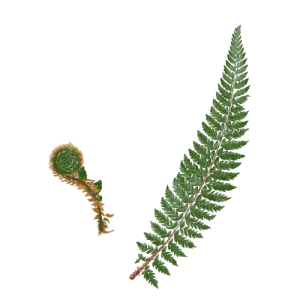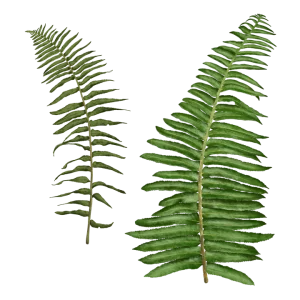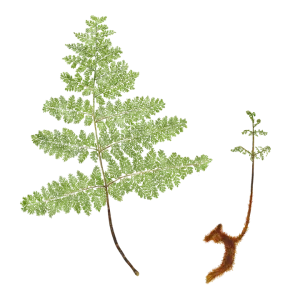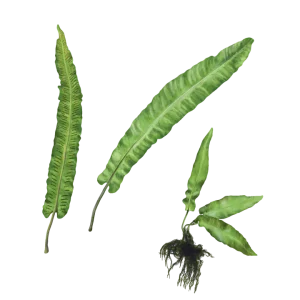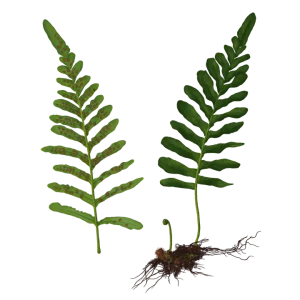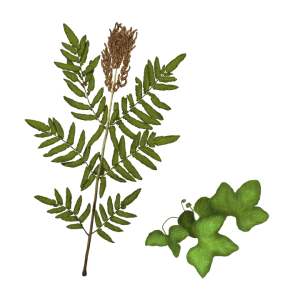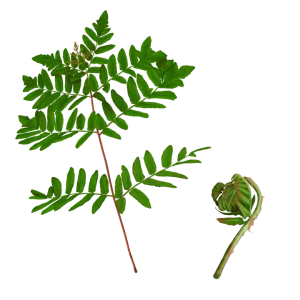Polystichum neolobatum – This is a real eye-catcher with his strong, erect and shiny leaves. It is well behaved, reliable and beautiful throughout the year. Fronds remain upright during winter, even in snowstorms.
SUBSTRATE & WATERING
A mix of 75% peat and 25% perlite works well but straight peat, coco-peat or a combination of both is possible. This is necessary because fern roots need plenty of air in the substrate to create a good root system. Excess water must also be able to drain away easily. The initial EC of the mix:0.5- 0.8 (for example a standard pre-mix) PH : 5.0-6.0.
This variety grows well in most- garden soil or potting mix and is easy to cultivate.
Foliage can be used in floral displays because it holds up well after cutting.
In early spring beautiful russet-colored croziers appear. The common name Asian saber fern is given to him by Norio Sahashi because of the fact that the fronds can be somewhat sharp to the touch. The fern is associated with walls and rocks in the lowlands and low mountains of eastern and southern Asia.
One of the best garden ferns from Asia. Very reliable.
Direct sunlight in summer can scorch the foliage however when you keep this plant away from sun it is very tolerant of hot and humid sites. This plant is drought tolerant. Place Asian saber fern with soft-textured ferns and plants with paler green foliage for best contrast.
Pest and disease free plant.
This is a great fern to put in a spot that you frequently look at throughout the year, as it always looks great. Can be used as a specimen but is best when grown in groups of 5 or more.
Highly deer resistant.

Available soon in our webshop.

